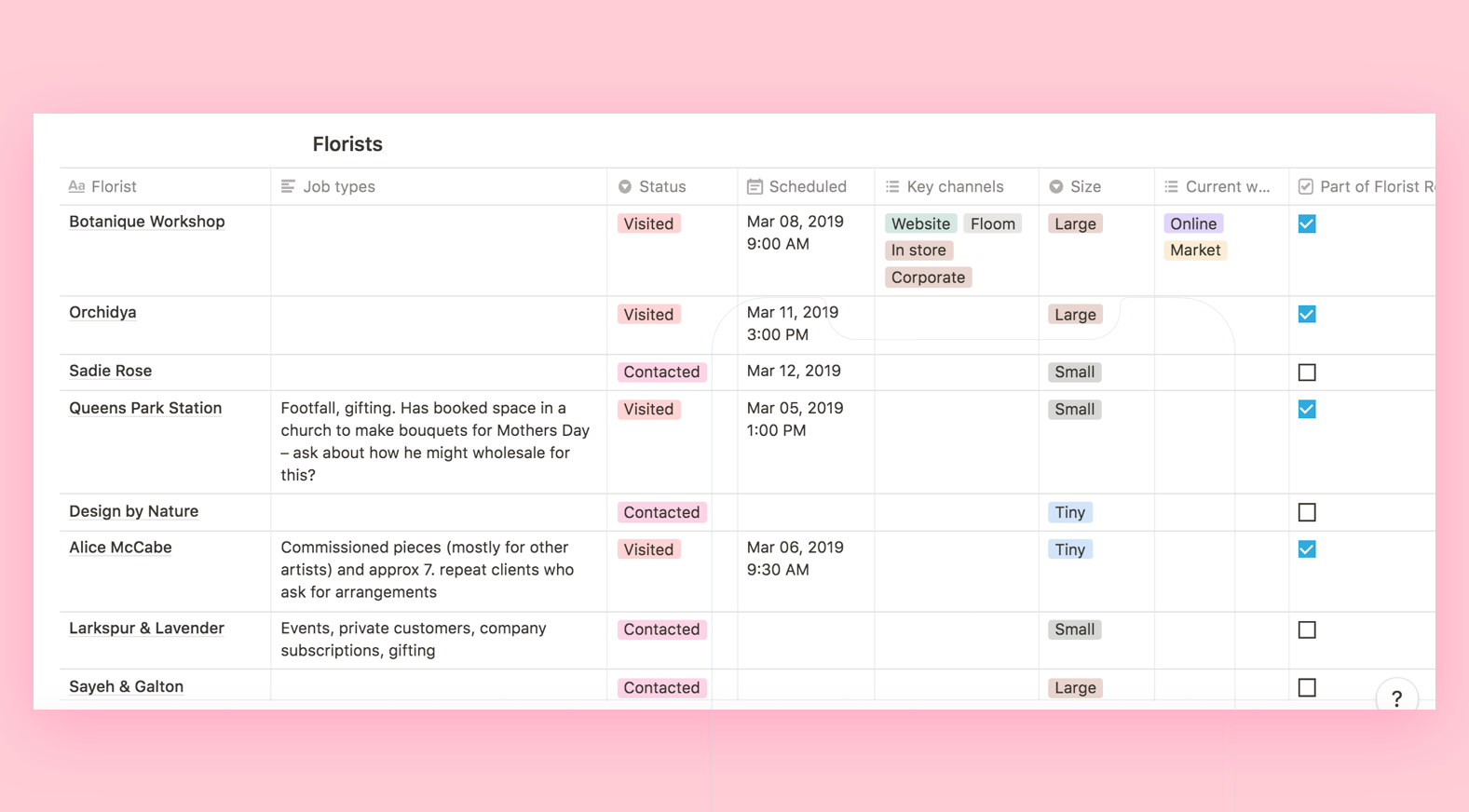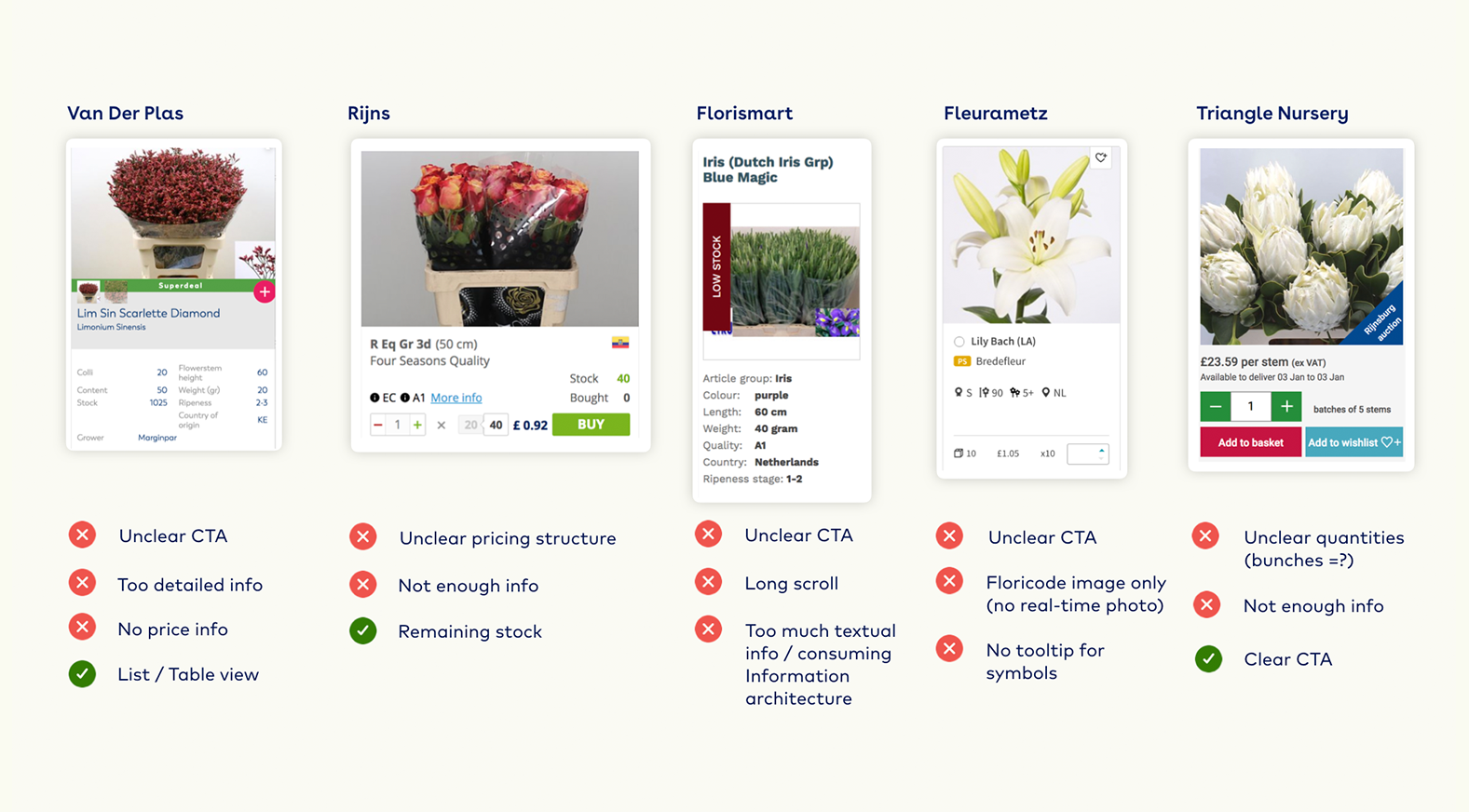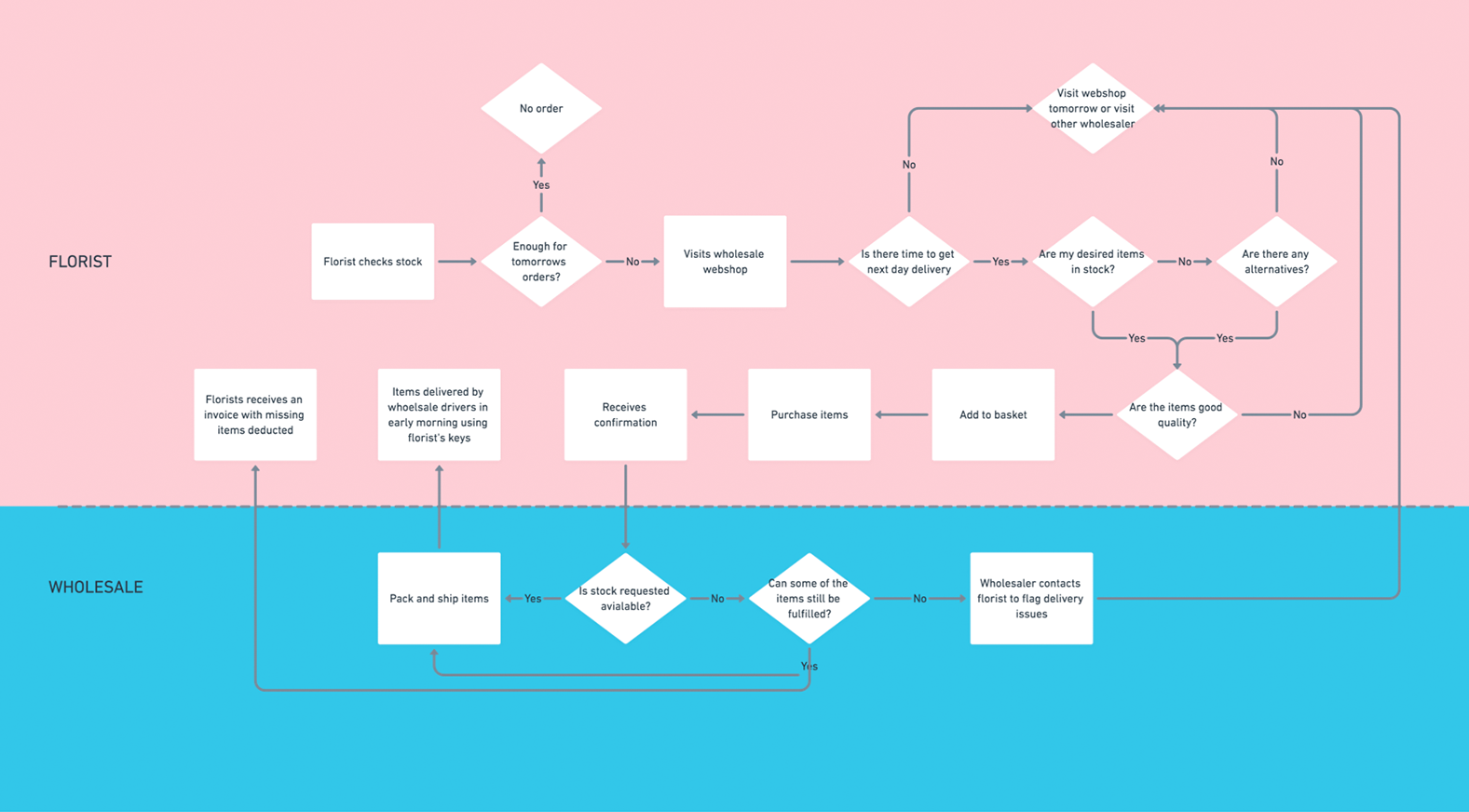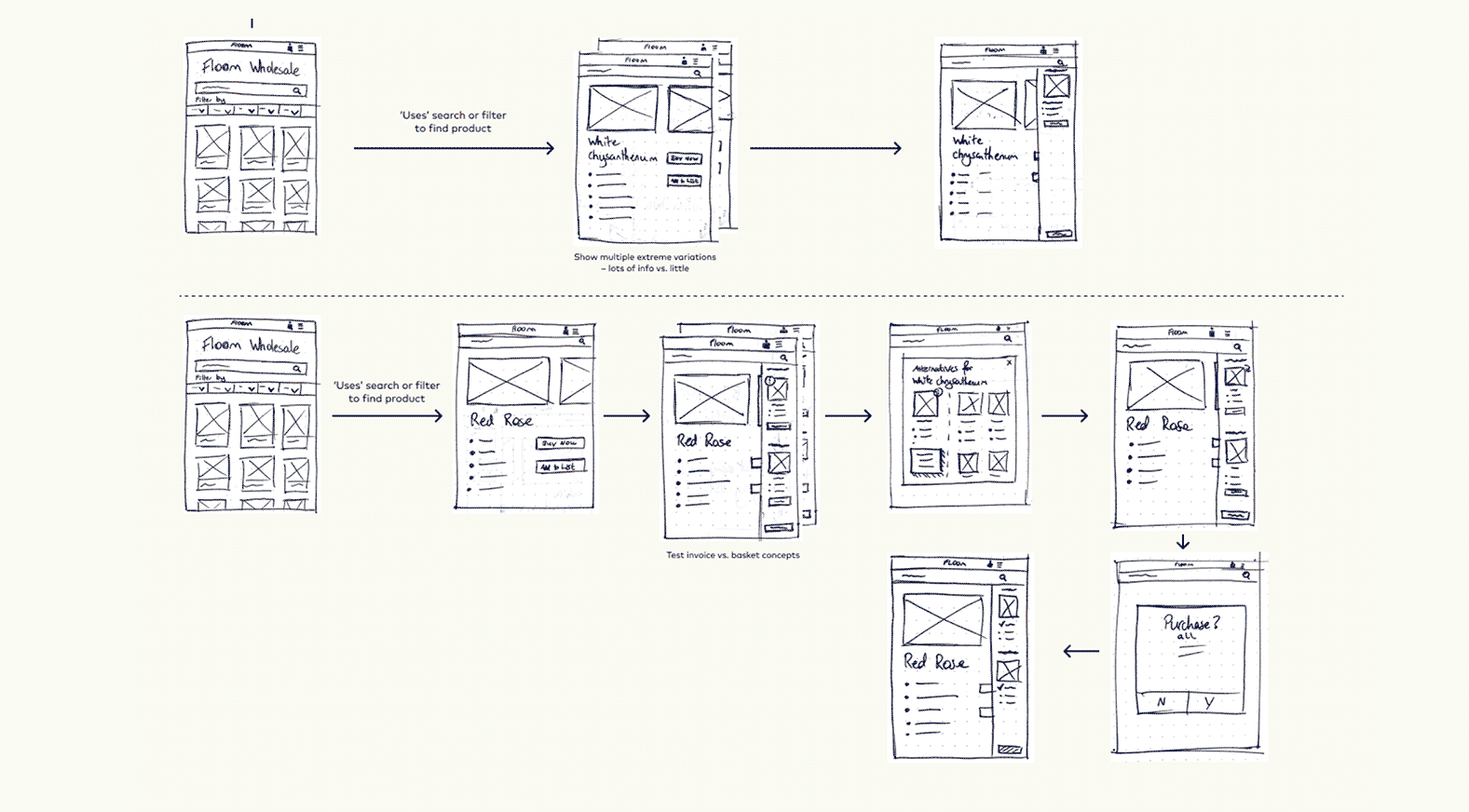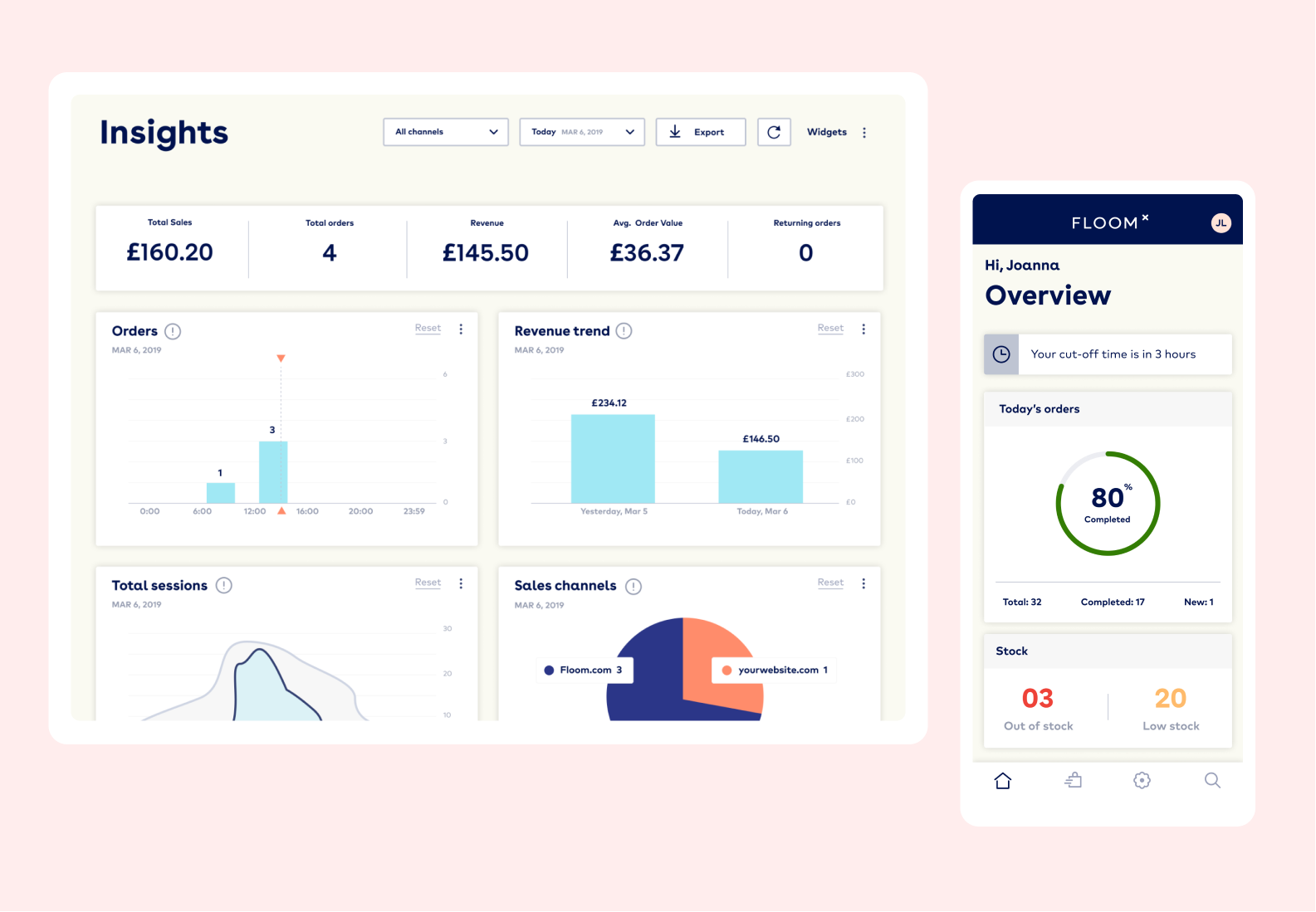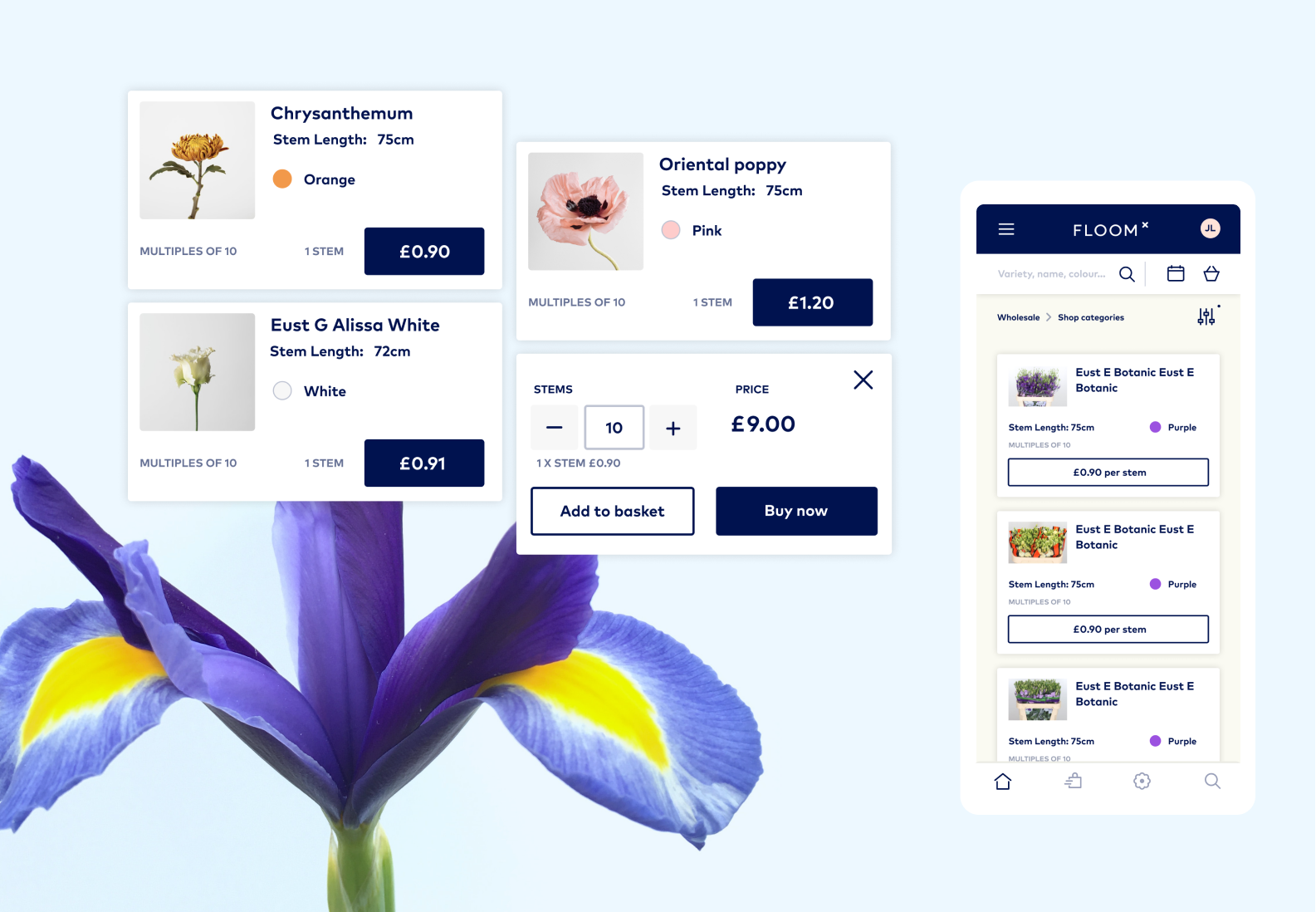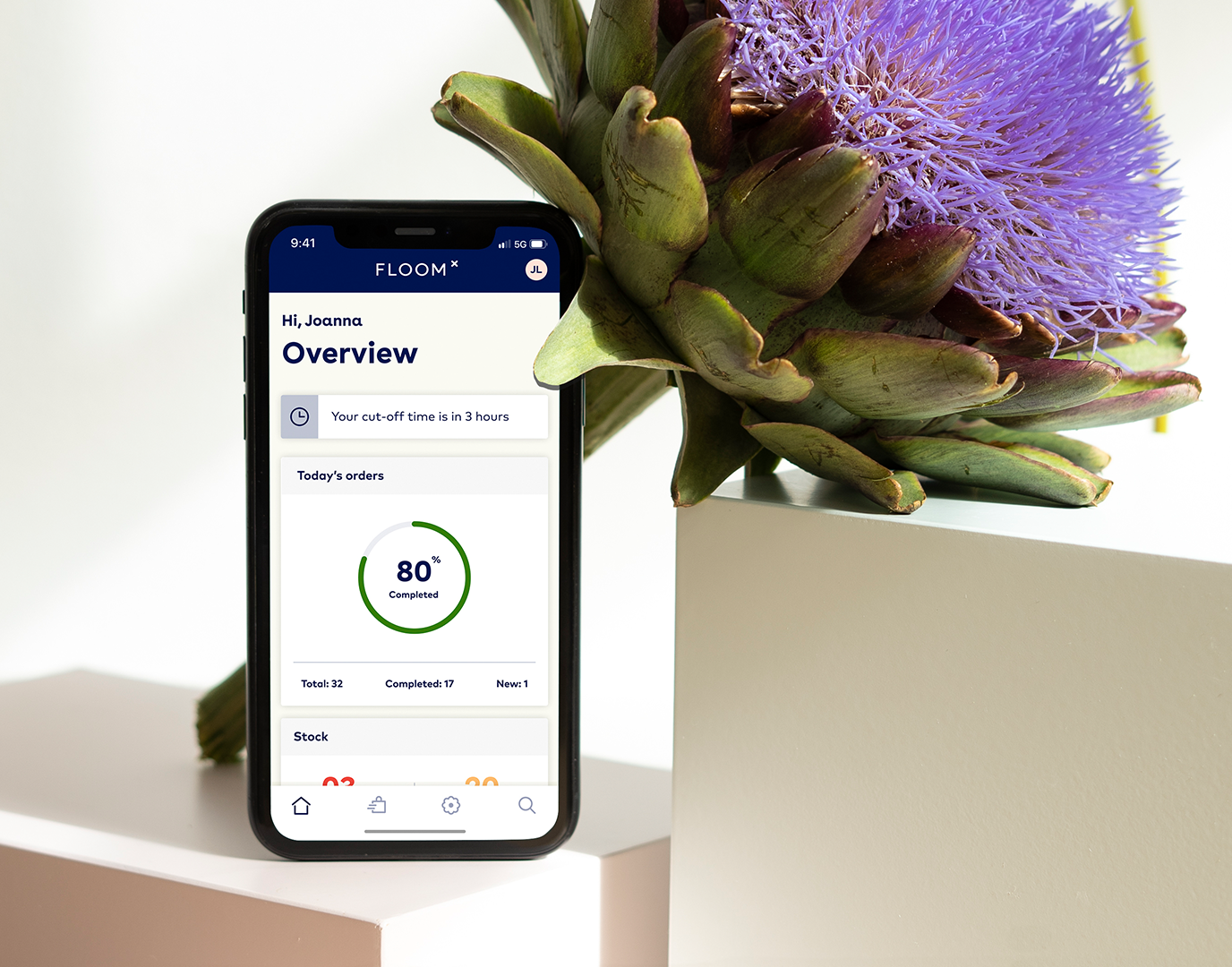
Product Design Tasks
As part of product design team, I was responsible for researching, developing and proposing designs for new features on Floom platform. Some of these features include integrating courier delivery services, adding wholesale shop, creating events management service etc. These features help florists manage their day-to-day tasks more efficiently. As in all product development projects, I followed a set of stages from problem disocvery and definition, user research and usability studies, competitor analysis, prototyping and prepairing work for developers.

